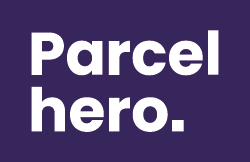From Fear to Opportunity: How Business Owners Can Reframe Risk in Financial Decisions

With the new year comes a fresh opportunity for business owners to reimagine their strategies, set ambitious goals, and reignite their vision for the future. Building a thriving business requires not just financial investments, but also the courage to take bold, calculated risks. However, psychological barriers such as a fear of failure and loss aversion can significantly impact a small business owner’s ability to take the risks needed to achieve long-term growth.
Capital on Tap has spoken to experts Eloise Skinner, an author and psychotherapist, and Dr. Sham Singh, a psychiatrist, to share their perspectives on how business owners can overcome these hurdles to embrace financial investment as a strategic advantage.
Fear of loss can hold business owners back from even greater gains in the future
Business owners face a unique set of psychological challenges when it comes to making financial investments. Eloise Skinner and Dr. Sham Singh agree that fear of failure, loss aversion, and short-term thinking are among the most common obstacles.
“Loss aversion might steer people towards safer or less risky investments or spending,” explains Skinner. While this can feel like a protective measure, business owners “might actually limit the scope for success of the business in the future.”
Dr. Singh elaborates, “The preference to avoid losses over equivalent gains often sees business owners avoid making any upfront financial commitments. This can create a self-limiting cycle where opportunities are passed up due to an exaggerated perception of risk.”
Such fears are often affected by cognitive biases, including negativity bias and a focus on the present instead of the long term. Dr. Singh mentions “an availability heuristic”, meaning if something comes to mind quickly, we tend to believe it is more common or more likely to happen. “This makes people consider every recent or vividly recalled failure as a representative, skewing their perception of risks and resulting in people preferring situations under their control rather than risking a perceived uncertain outcome,” says Dr. Singh.
For example, business owners might hesitate to invest in tools like a business credit card to manage cash flow or fund growth initiatives, despite their potential benefits. Small business credit cards can offer flexible spending options and rewards that align with long-term goals, yet the fear of initial debt often holds owners back.
Reframing risks as opportunities is key to a successful business
To overcome these psychological barriers, Skinner and Dr. Singh emphasise the importance of reframing how risks and losses are perceived. “Framing refers to the way information is presented and how that influences decision-making,” explains Skinner.
Dr. Singh supports this: “Being told an investment has a 70% success rate may feel more appealing than hearing it has a 30% failure rate, even though both are mathematically identical.” Therefore, perception can often be just as powerful as facts.
The experts also highlight practical strategies for reducing fear, such as:
Goal Setting and Vision Planning: “Goal-setting or vision-planning can be powerful”, says Skinner. Setting a company’s values can “allow a business owner to feel more comfortable with risk-taking.”
Data-Driven Decisions: Dr. Singh advises relying on objective analysis rather than emotional reasoning, “By analysing costs, potential returns, and risks objectively, business owners can separate irrational fears from actual threats”
Mentorship and Support: Both experts recommend seeking guidance from trusted advisors to build confidence and perspective.
For long-term success, business owners must cultivate resilience and adopt mindsets that support financial risk-taking
There is no single route to building a thriving business, but the experts point to certain traits that often underpin financial success. Dr. Singh emphasises the importance of optimism, describing it as “the fuel for the owner to feel motivated.” This, combined with perseverance to push through setbacks, and adaptability to navigate a fast-changing market, forms a strong foundation for success.
However, these skills only develop over time, and “resilience grows with experience,” says Dr. Singh. “Every risk taken, every lesson learned builds confidence in making decisions.”
Skinner highlights another essential aspect: maintaining self-esteem and cultivating an identity separate from the business itself. “This can be developed through personal development tools/materials, or by working with a mental health professional,” Skinner advises.
To foster a more growth-oriented mindset, Skinner and Dr. Singh recommend exercises such as scenario planning and reframing money as a tool for growth rather than a finite resource. Using tools like business credit cards, for instance, can help small business owners align their financial decisions with their growth strategies, while also building resilience to take calculated risks.






